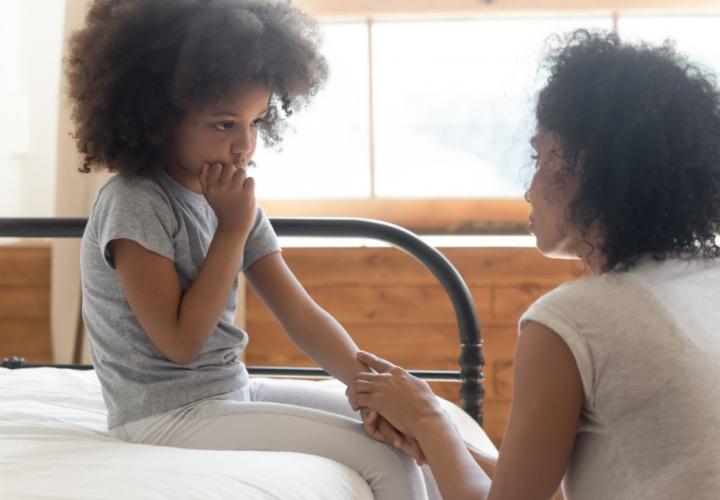If you’re about to lose control, leave the room.
Be especially tuned into this with experiences like anger or feeling completely overwhelmed. It’s hard to think rationally and react well when we’re boiling over, and it isn’t healthy for kids to see us in those moments.
Take a moment to reset. (These tips for kids also work for adults.) Decide how you want to respond.
Then come back and debrief with your child: Acknowledge and label what you experienced. Explain why you took a moment alone, and what you did.
If you didn’t like how you handled something, admit it.
Especially for kids who are school age and older, there’s something really powerful in saying, “I didn’t like how I handled that. Here’s how I hope we can talk about it together.”
It gives your child the opportunity to see that they can make mistakes too, then try to do something about it and handle it better next time.
If a situation mostly affects your child, keep the focus on them.
Yes, there are still many times when your emotions should take a back seat to your child’s – namely, when a situation directly involves your child, and not so much you.
Say your child is scared of getting a shot, or talking to you about peer pressure or something difficult at school. Set your own emotions aside for the moment, and focus on supporting your child.
Later, tap into your support system – a friend, counselor or loved one – to help you acknowledge and manage what you’re going through.
Ask for help when you need it.
If you’re having a hard time coping and being there for your child, reach out to your insurance provider or doctor for help finding a therapist.
You can get guidance to navigate life’s many challenges and learn how to walk the line of sharing – but not oversharing – your emotions with your child.
Be gentle with yourself.
Just because you’ve got the title of being a parent doesn’t mean everything else gets easier, or that you have to be a superhero. Think about what helps you cope, and schedule time for it when you can.
Above all, be gentle with yourself. Acknowledge the things you’re doing well, and the toll of everything you’ve been through. That’s self-care too.

